A Guide to Local Fruit in Texas
By Whisper Lettuce Farm Manager Kylie Treekin
With almost 300,000 square miles, Texas provides a wide range of agricultural goods across the entire state. Nearly any vegetable you’d like could be grown somewhere in this great state. But with local fruit, things can be a bit more limited. Particularly, during the winter months when only Grapefruit and some oranges are available. While still delicious, the same citrus can get a tad boring for a period of almost 3 months! Starting in late February, however, the varieties start to improve. So, we’d like to take you through the fruit growing calendar here in Texas so you can know what and when to expect those delicious and nutritious treats!
Apples
Beginning in July and running through November, America’s favorite fruit, the Apple, comes into season here in Texas. A good variety can be grown throughout the state, but are primarily grown in North Texas, where the winter frost is a bit more predictable. Many varieties require some frost for the fruit to develop properly. Here in Texas, Apples will get sweeter the longer they are on the tree. Be on the lookout for Gala Apples beginning in July, Fuji’s in September, and Granny Smith in October. When the season is in full swing, you can head out to the hill country and do some apple-picking yourself!
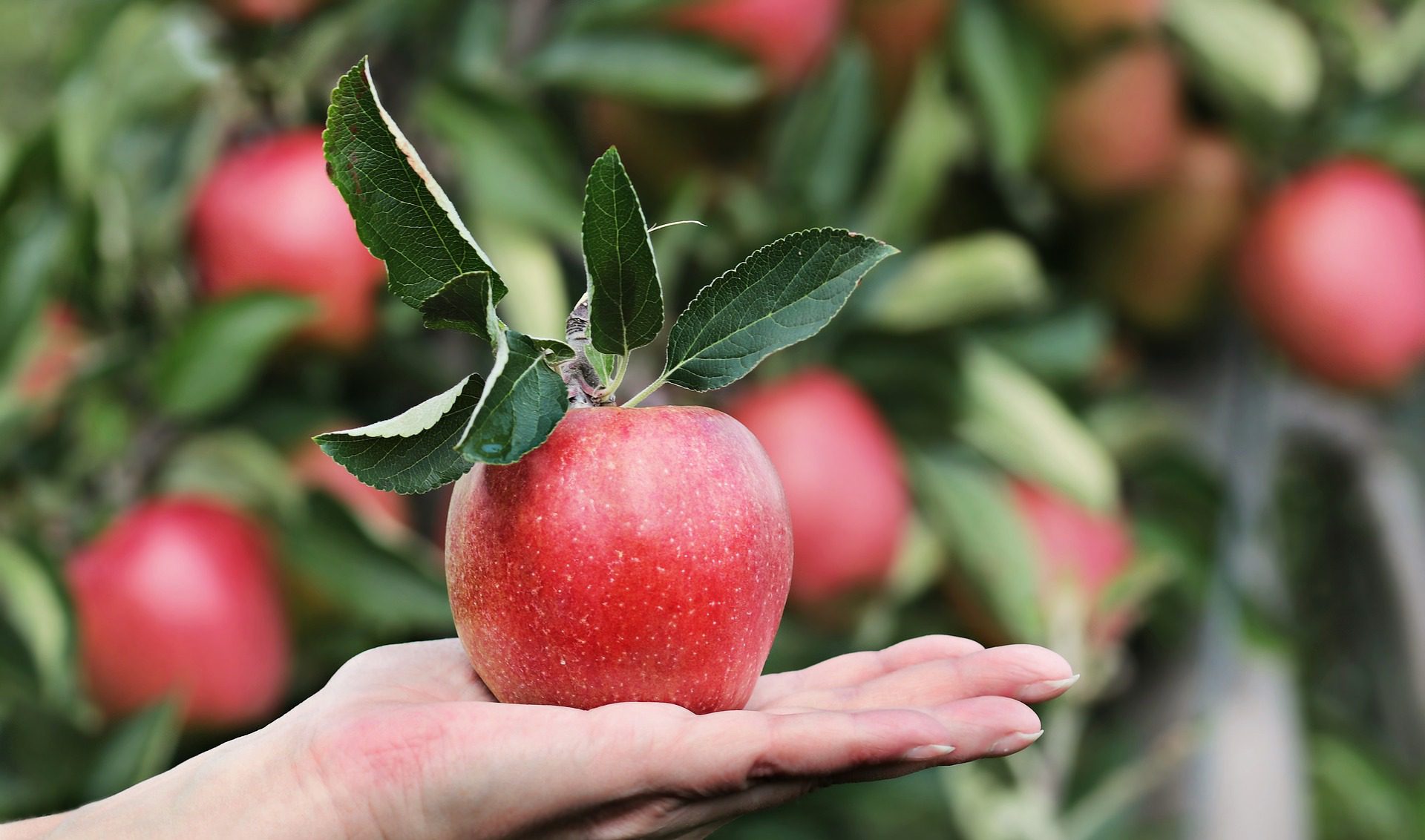
Berries
Each kind of berry has its own season. Blackberries, blueberries, and strawberries are the most common types found in Texas. Strawberries come first in the year, beginning as early as late February and produce into mid-May. These plump red fruits can be found at just about any Texan Farmer’s Market during their season.
Blackberries are up next starting in late April and ending in mid-June. Blackberries grow well in all Texas soils and wild varieties can be found in some places.
Blueberries come into season during the month of May and are available into July. The tiny blue fruits are bit fickler than the other two and are mostly grown in the East and Southeastern parts of the state.
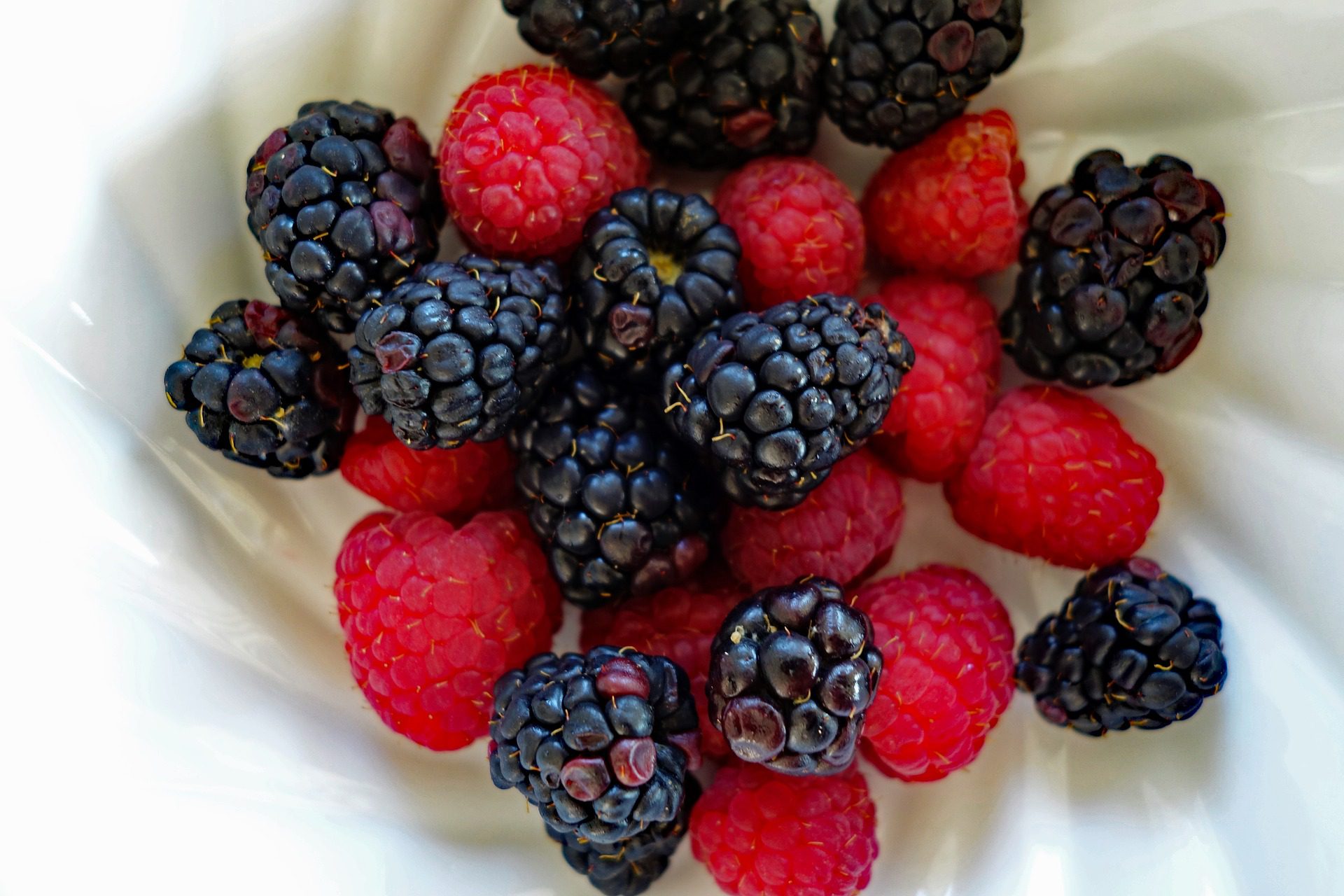
Citrus
Texas is known for its giant Ruby Red Grapefruit. In fact, it’s the official state fruit as well as a symbol of Texas agriculture. The Grapefruit season lasts longer than any other fruit in Texas, running from November to May. Aside from the sweet, deep red flesh of the Ruby Red, Grapefruit in Texas also come in a paler, sweet pink, and a tart white.
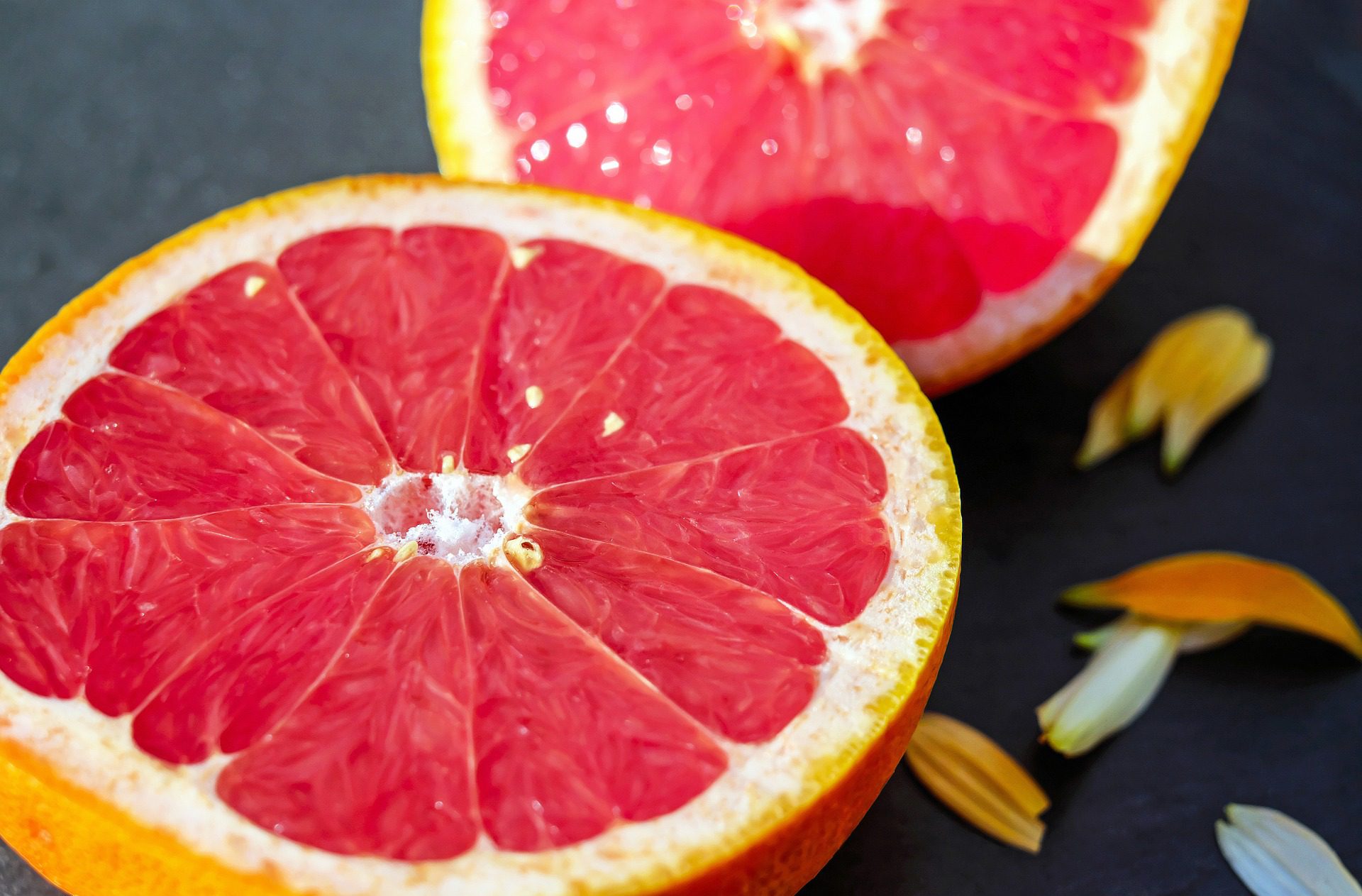
Oranges are also quite abundant in the lone star state, especially in the southern regions. Their season starts a bit earlier in October with the Navel variety and continues into May with the Valencia variety. The Hamlin and super sweet Pineapple oranges are also commonly found in Texas.
Tangerines, which are similar to mandarin oranges in look and flavor, grow from October to January. The Tangelo, a knobby topped hybrid of tangerines and grapefruits, can be found for a short time during the winter months, November thru January.
Figs
The small, dark purple, cosmic fruit (close up it looks like the night sky) is most commonly eaten dried as fresh figs have a short shelf life. But if you’re lucky and time it just right, you may be able to find some in central and southern Texas. Three varieties, Alma, Celeste, and Texas Everbearing, produce decent crops. However, figs can take quite a beating when the frost comes. Depending on the variety, Fig season will start in mid-June through August and some trees may produce a second crop in the Fall.
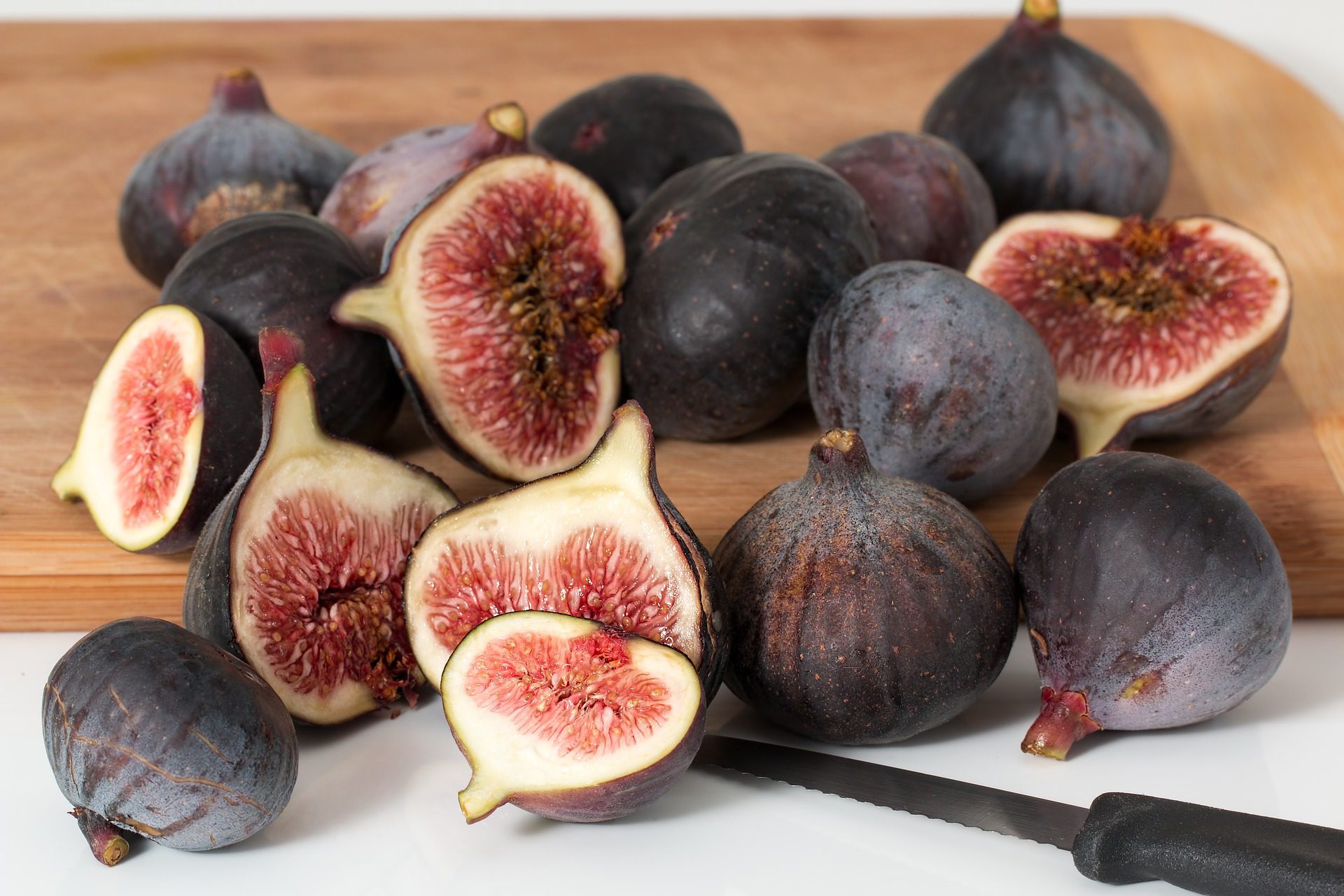
Grapes
The Texas Hill-Country has a thriving wine industry and Texas is the oldest state growing grapes. However, grapes for the table are more rare, but not impossible to find. Muscadine grapes are well adapted to the East Texas and Gulf Coast climate. However, growing grapes at home may be a bit easier than finding them at a Farmer’s Market. Like much of the world, grape harvest typically start in late August and continue through September and into early October at the latest.
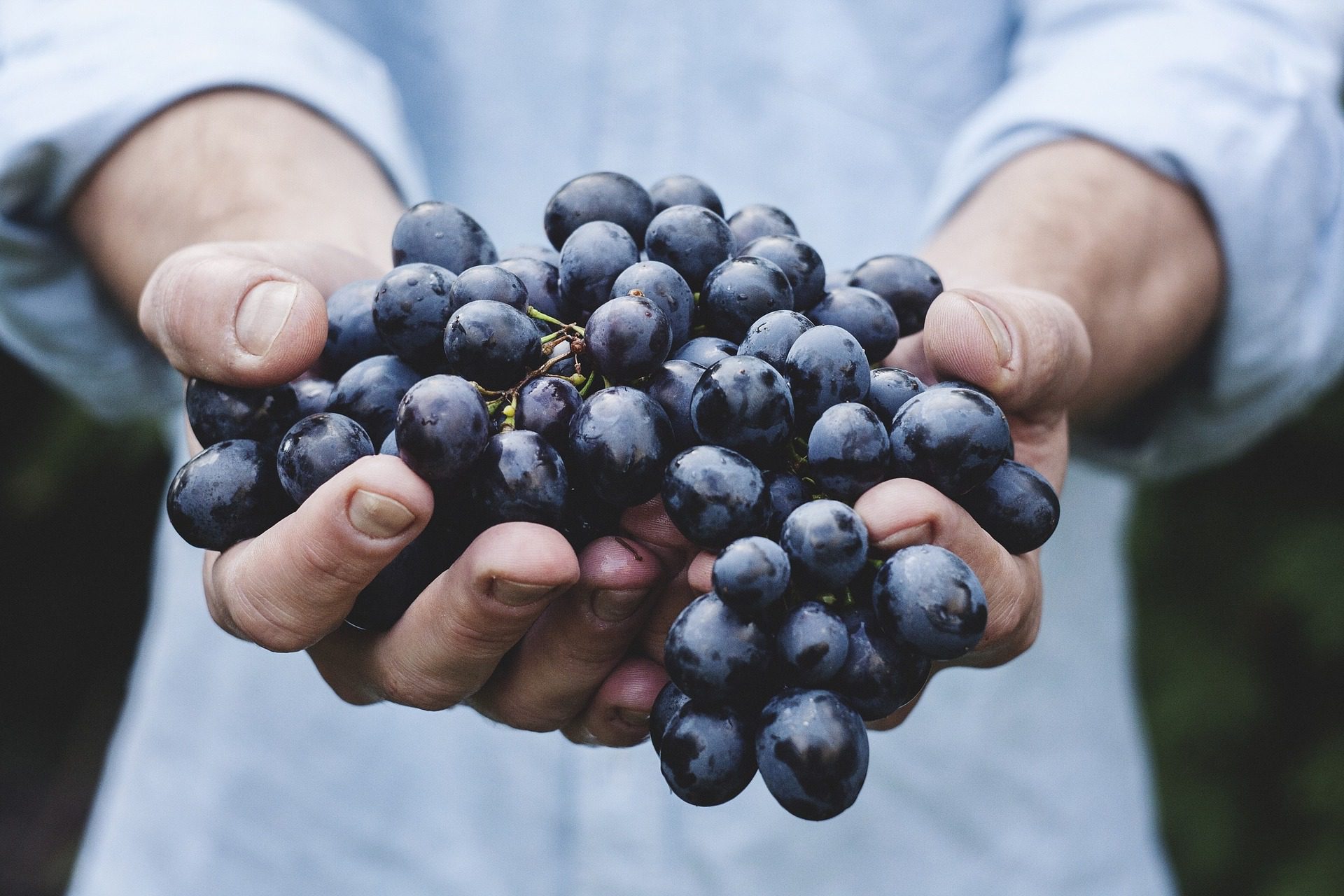
Melons
If the Grapefruit wasn’t the state fruit, it would certainly be a melon. Nothing says summertime quite like a crisp, delicious melon on a hot Texan day. Melons thrive and produce abundantly throughout the state. Cantaloupes, Honeydew, and Watermelon are among the most common varieties but if you look hard enough you may find some Canary, Christmas (Toadskin), or other melons at a Farmer’s Market. You can expect melons to start showing up as early as May and continue well into October and even November during warmer fall seasons.
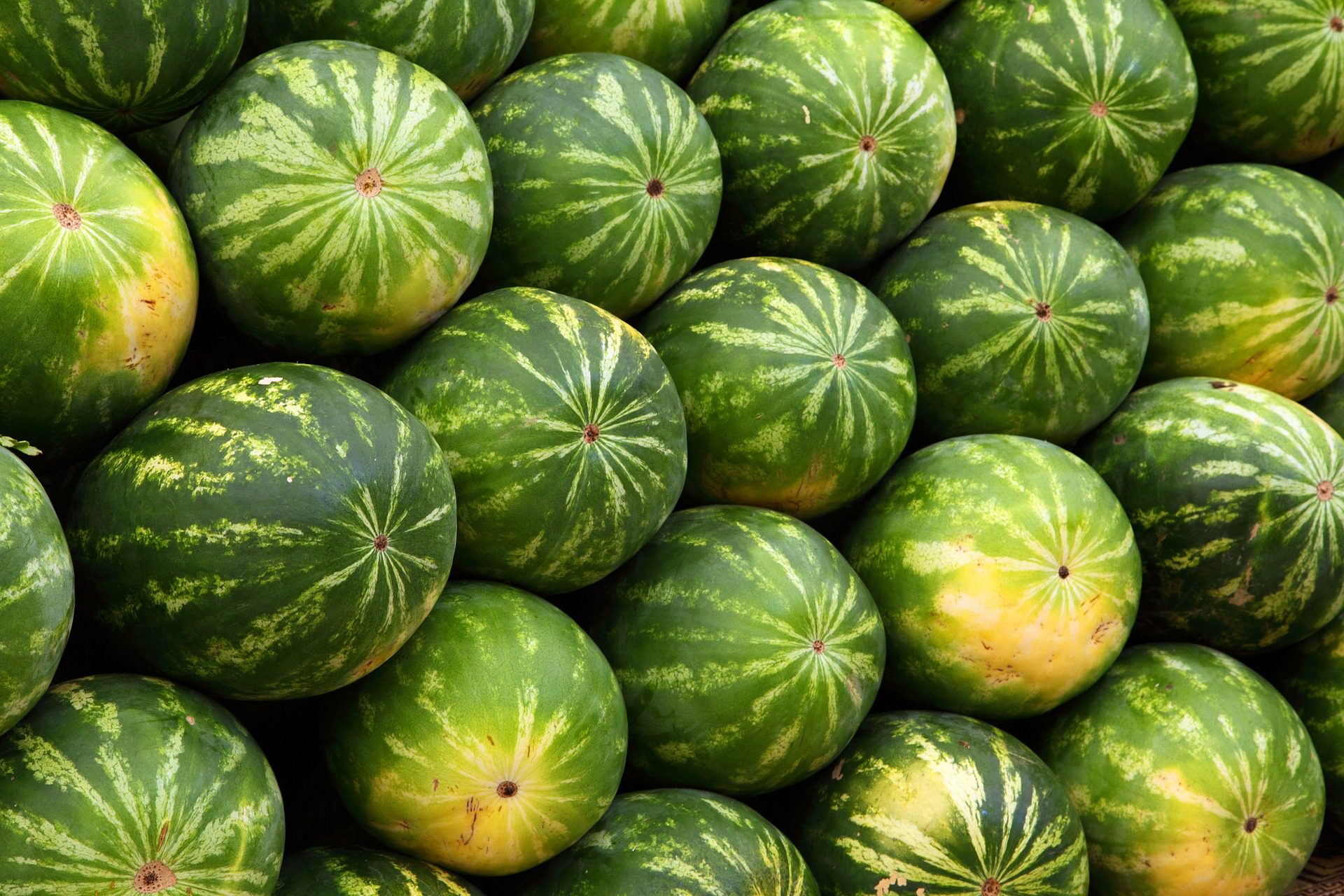
Stone Fruits
A drupe, or more commonly known as stone fruit, is a tree fruit with an outer fleshy part and a hardened pit or stone inside that encloses a seed kernel. Think; peaches, plums, cherries, even mangoes. Here in Texas, the top performing stone fruit is the peach, followed by plums, with the occasional nectarine, cherry, or pluot. Both the flowers and fruits produce some of the most brilliant and beautiful colors of the entire fruit tree kingdom. However, early blooms can be damaged by a late spring frost, so crop yields can vary with how long the winter lasts.
Peaches are quite abundant throughout Texas. With over 20 varieties that start to ripen in May and continue through August, the sweet, yellow-red-orange, fuzzy flesh is a delicious and nutritious treat all summer long. Peach varieties are often referenced by their “cling,” or how much the flesh sticks to the pit. Each variety is considered either cling, semi-free, or free. While this does not affect the flavor, it may change the eating experience (freestones are easier to eat). So be on the lookout for the clinging Flavorich and Regal varieties in early May and the freestone, white-fleshed Southern Pear variety in June!
Plums are the second most available stone fruit in Texas and come in a few varieties, and are mostly Japanese hybrids (as opposed to European). With colors ranging from deep purple to yellowish orange, these sweet and tart fruits start to show up in late May or early June and continue producing through July. Since plums must be cross-pollinated, where you find one variety you are sure to find another.
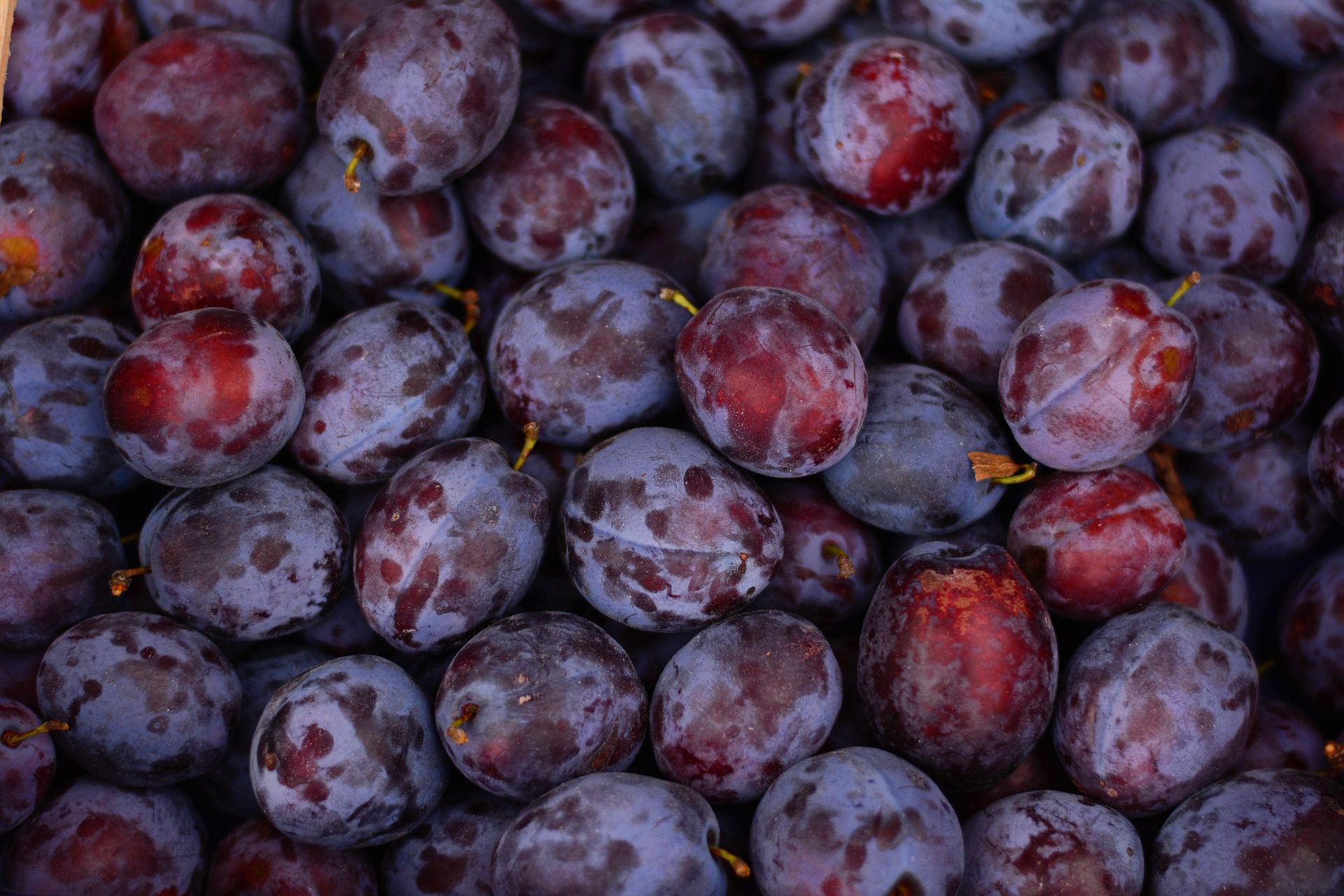
Nectarines are fuzz-less peach. While distinct they are considered a mutation, not a hybrid of the peach. Varieties are also regarded as cling or freestone. Due to their susceptibility to wind damage and disease, Nectarines are not as abundant in Texas. Look for them starting in late May and through the end of July.
Apricots and Cherries require more chilling than Texas can often provide, so their availability is rare. However, that does not mean it is impossible, they are just likely to find in much smaller quantities. Perhaps you’ll meet a nice farmer that has a few trees on their farm and they will let have a few pounds during the months of June and July.
Pluots are a hybrid between apricots and plums. Their color can range from the bold yellow-orange of an apricot to the deep purple of plums. Much like nectarines, their availability can vary with the steep temperature swings we experience in Texas. Start keeping an eye out during the months of June and July for these sweet and colorful fruits.
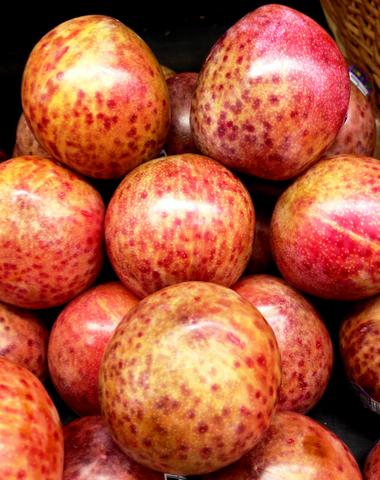
Photo: Bapak Alex
Pears
Pears are one of the few fruits that produce well in all regions of the state. Some trees have even outlasted the homes they were planted by. There are two distinct types of Pears: European and Asian. Different varieties for each are adapted for different regions of Texas, but the Hill Country and West Texas provide the best conditions.
European Pears commonly come in shades of green with sweet fragrance and softer flesh. Think Bartlett or Bosc, however, these common varieties do not grow well in Texas. Some great varieties to look for include Moonglow, Maxine, and Warren. Most ripen in August and some in September.
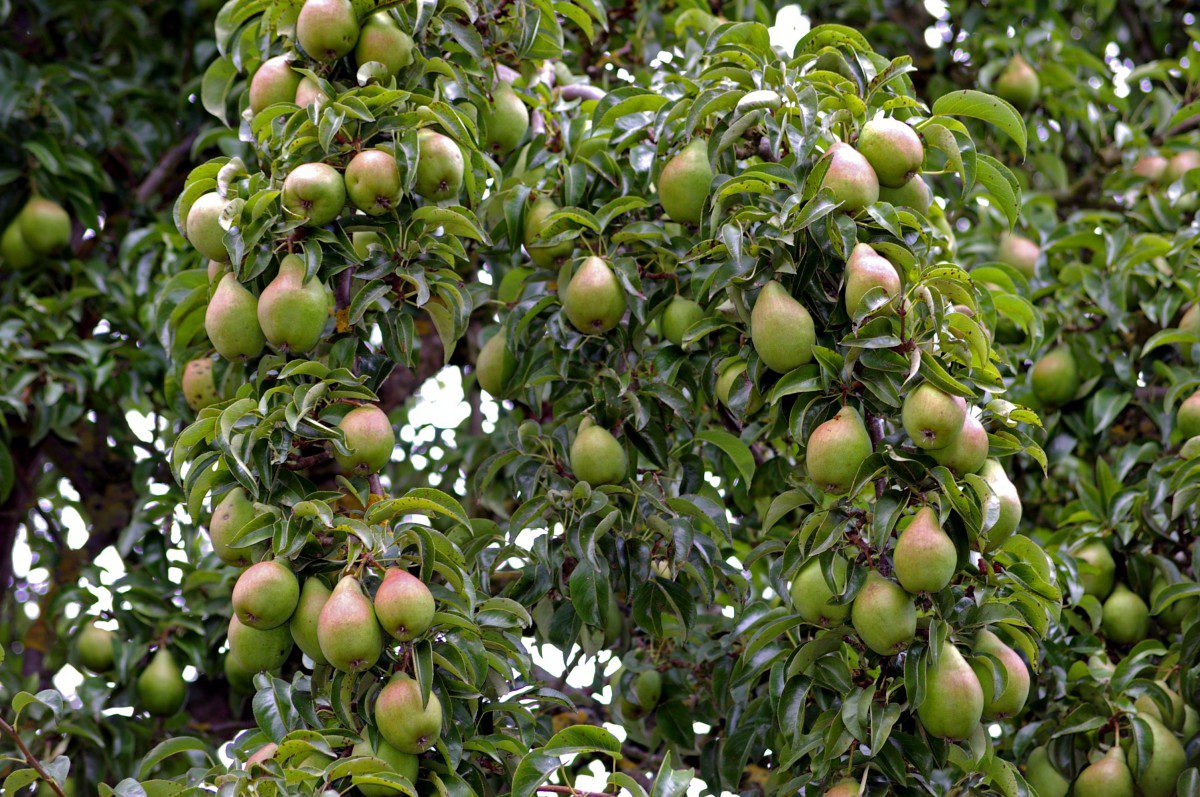
Asian Pears have more shades of brown, have flesh that is crisp and apple-like, and some are even shaped more like an apple than a pear. Many varieties have been well adapted to the Texan climate but some of the top performers include 20th Century (Nijisseiki) and Housi. These pears begin to ripen a few weeks earlier, starting in mid-July.
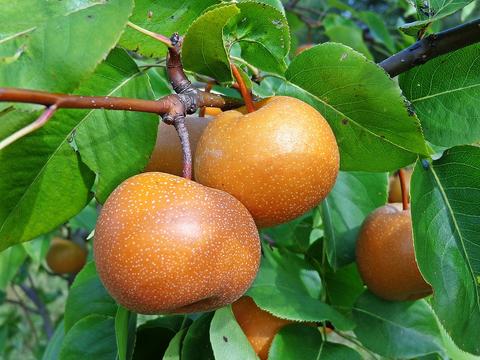
Persimmons
Persimmons are a small orange fruit that looks like a cross between an apple, an orange, and a tomato! There are native varieties, the American Persimmon and Texas Persimmon. These varieties grow wildly in Texas and the arider southern U.S. However, the Oriental Persimmon is the more common variety found in stores. Many of the Oriental varieties adapted to Texas produce seedless fruits with colors ranging from yellow to deep red. The earliest varieties begin to ripen in September with most ripening in late October or November.
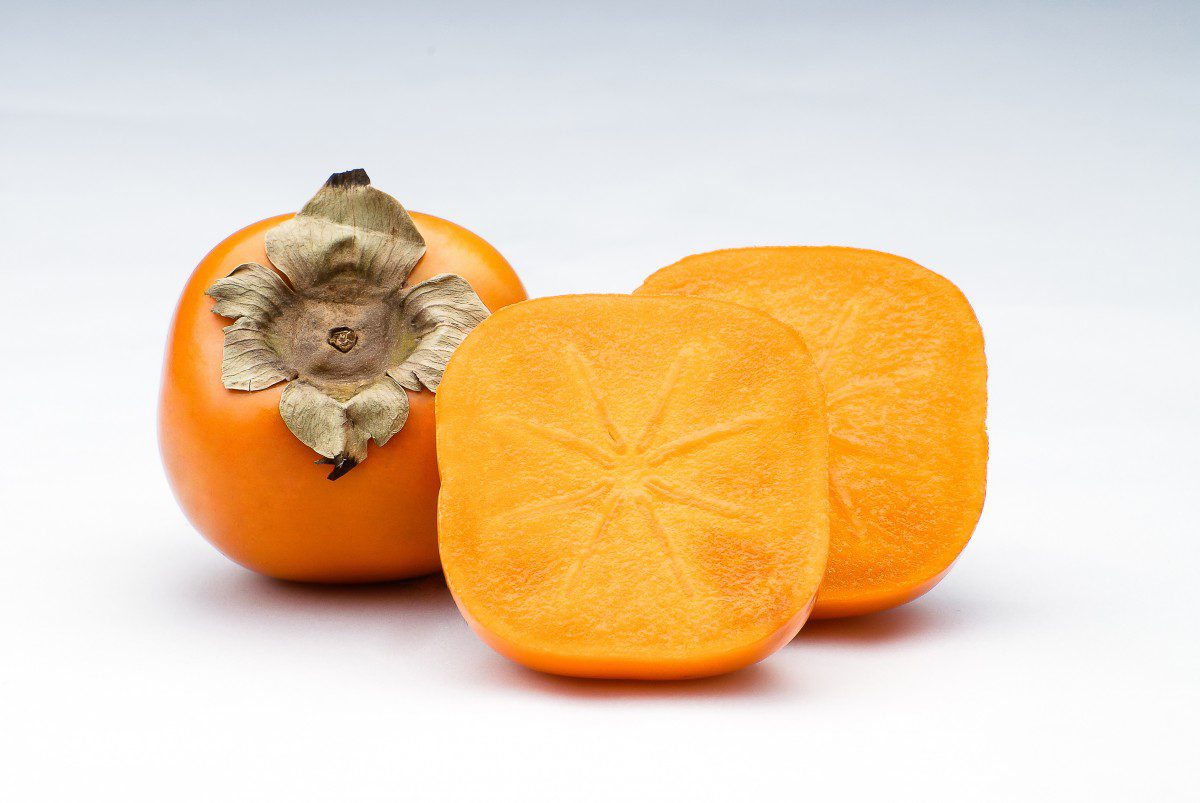
Pomegranates
Pomegranates grow very well in places with long dry summers. Something we have in abundance here in Texas. They are unique in shape, color, and taste. Many refer to them as a superfood due to their high content of antioxidants. With each passing year, a single tree will produce higher and higher yields. The early-ripening varieties will be ready in late September and continue through October and November for the later ripening ones.
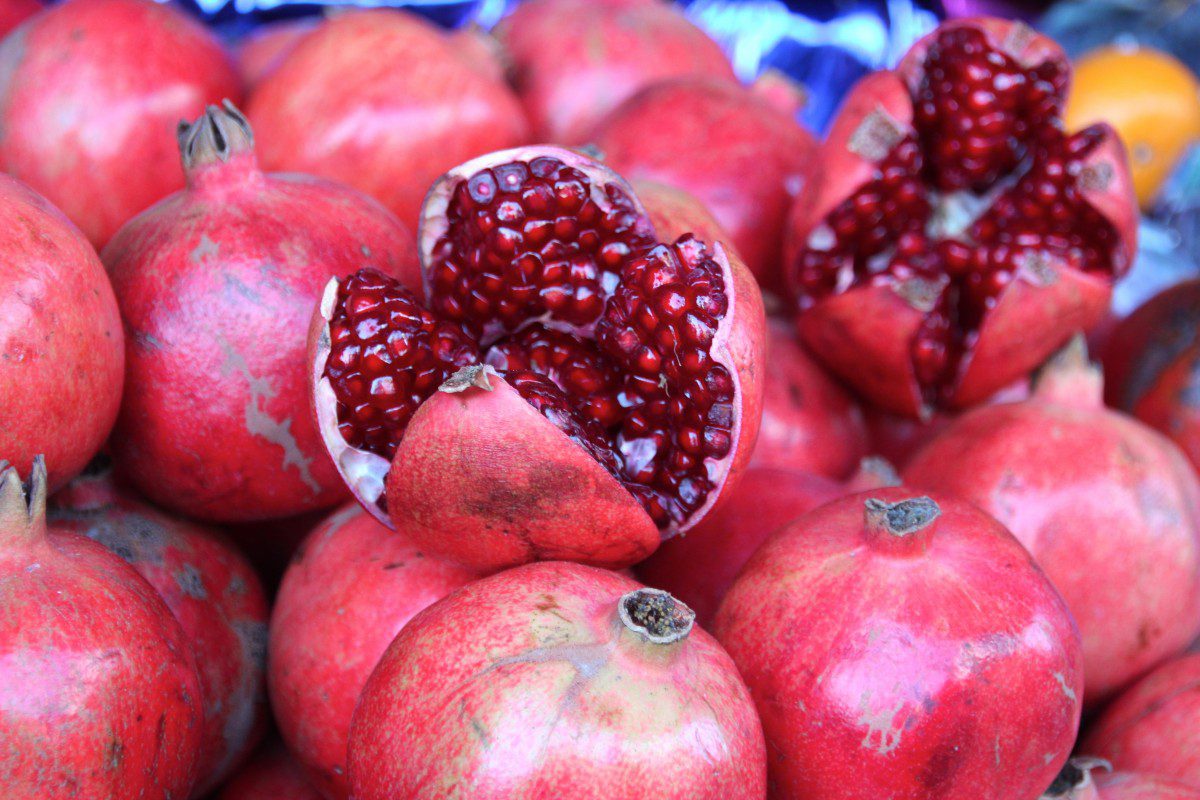
While this guide is not totally comprehensive, it does cover the fruits that most people in Texas will be able to find at Farmers Markets or other local sources. Other, less commonly found fruits that can grow in Texas include the Jujube, loquats, kumquats, pawpaws, mayhaws, papayas, and bananas. These fruits are either not produced commercially or have inconsistent crops. With so many wonderful varieties of fruit available here in Texas, we hope you get the chance to try them all!
Are you curious about Whisper Valley’s on-site farms and gardens? Contact us today to learn more!

